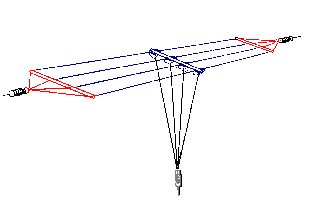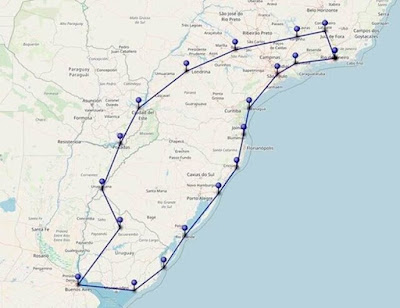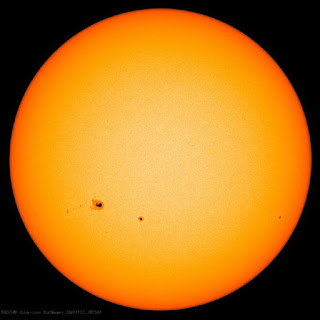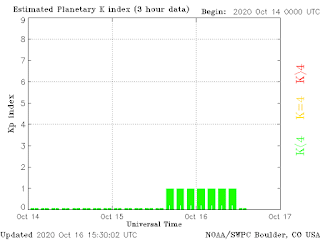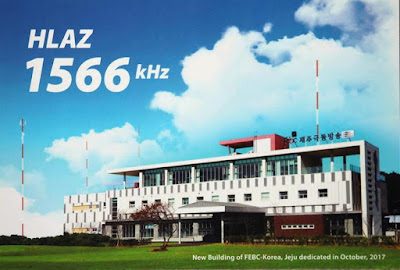Author Archive
 Hunting For NDBs In CLE 264
Hunting For NDBs In CLE 264
Propagation on MF has been excellent this past week and hopefully will continue to be good.
A 'challenge target' for listeners in North America is YEK - 329kHz in Arviat, NU, on the NW shore of Hudson Bay. It's widely heard throughout North America and is a good target for listeners on both coasts. Listen for YEK's upper sideband on 329.424 kHz with your receiver in the CW mode.
When tuning for NDBs, put your receiver in the CW mode and listen for the NDB's CW identifier, repeated every few seconds. Listen for U.S. NDB identifiers approximately 1 kHz higher or lower than the published transmitted frequency since these beacons are modulated with a 1020 Hz tone approximately.
For example, 'AA' near Fargo, ND, transmits on 365 kHz and its upper sideband CW identifier is tuned at 366.025 kHz while its lower sideband CW ident can be tuned at 363.946 kHz. Its USB tone is actually 1025 Hz while its LSB tone is 1054 Hz.
Often, one sideband will be much stronger than the other so if you don't hear the first one, try listening on the other sideband.
Canadian NDBs normally have an USB tone only, usually very close to 400 Hz. They also have a long dash (keydown) following the CW identifier.
All NDBs heard in North America will be listed in the RNA database (updated daily) while those heard in Europe may be found in the REU database. Beacons heard outside of these regions will be found in the RWW database. These databases have recently been re-vamped and are slicker than ever before!
From CLE coordinator Brian Keyte (G3SIA), comes the following CLE info:
Hello all,
Here are all the details for this weekend's co-ordinated listening event.
First time CLE logs too? Yes, please!
Short logs are always as welcome as long ones.
Days: Friday 22 January - Monday 25 January
Times: Start and End at midday, your LOCAL time
Range: 320.0 - 334.9 kHz
Please log the NDBs you can positively identify that are listed in the frequency range (no DGPS please), plus any UNIDs heard there too.
Send your CLE log to the List, if possible not in an attachment, with CLE264 and FINAL at the start of its title.
Please show on EVERY LINE of your log:
# The date and UTC (the day changes at 00:00 UTC).
# kHz - the beacon's nominal published frequency, if you know it.
# The Call Ident.
Show those main items FIRST on each line, before any optional details such as the NDB's Location, Distance, Offsets, Cycle time, etc.
As always, make your log meaningful to everyone by including your listening location and details of the receiver, aerial(s), etc.
It would be OK to use one remote receiver, with the owner's permission if necessary, provided that ALL your loggings for the CLE are made using it.
Joachim or I will send the usual 'Any More Logs?' email at about 20:00 UTC on Tuesday so that you can check that your log has been found OK.
Do make sure that your log has arrived on the List at the very latest by
09:00 UTC on Wed. 27th January.
We hope to complete the combined results within a day or two.
You can find all CLE-related information from our CLE page ( http://www.ndblist.info/cle.htm ), including a link to the seek lists provided for this Event from the Rxx Database.
Good listening
Brian & Joachim
---------------------------------------------------------------------
From: Brian Keyte G3SIA ndbcle'at'gmail.com
Location: Surrey, SE England (CLE co-ordinator)
---------------------------------------------------------------------
If you are interested in some remote listening - maybe due to local difficulties - you could use any one remote receiver for your loggings, stating its location and with the owner's permission if required.( e.g. see kiwisdr.com ) A remote listener may NOT also use another receiver, local or remote, to make more loggings for the same CLE.
These listening events serve several purposes. They
• determine, worldwide, which beacons are out-of-service or have gone silent since the last CLE covering this range
• will indicate the state of propagation conditions at the various participant locations
• will give you an indication of how well your LF/MF receiving system is working
• give participants a fun yet challenging activity to keep their listening skills honed
Final details can be found at the NDB List website, and worldwide results, for every participant, will be posted there a few days after the event.
The NDB List Group is a great place to learn more about the 'Art of NDB DXing' or to meet other DXers in your region. There is a lot of good information available there and new members are always very welcome. As well, you can follow the results of other CLE participants from night to night as propagation is always an active topic of discussion.
You need not be an NDB List member to participate in the CLEs and all reports, no matter how small, are of much value to the organizers.
Remember - 'First-time' logs are always VERY welcome!
Reports may be sent to the NDB List Group or e-mailed to CLE co-ordinator, Brian Keyte (G3SIA), whose address appears above. If you are a member of the group, all final results will also be e-mailed and posted there.
Please ... give the CLE a try ... then let us know what NDB's can be heard from your location! Your report can then be added to the worldwide database to help keep it up-to-date.
Have fun and good hunting!
 Hunting NDBs In CLE 263
Hunting NDBs In CLE 263
It's CLE time again!
'CLE's are 'Co-ordinated Listening Events, and NDB DXers around the world focus their listening time on one small slice of the NDB spectrum.
Propagation on MF has been excellent this past month and hopefully will continue to be good.
When tuning for NDBs, put your receiver in the CW mode and listen for the NDB's CW identifier, repeated every few seconds. Listen for U.S. NDB identifiers approximately 1 kHz higher or lower than the published transmitted frequency since these beacons are modulated with a 1020 Hz tone approximately.
For example, 'AA' near Fargo, ND, transmits on 365 kHz and its upper sideband CW identifier is tuned at 366.025 kHz while its lower sideband CW ident can be tuned at 363.946 kHz. Its USB tone is actually 1025 Hz while its LSB tone is 1054 Hz.
Often, one sideband will be much stronger than the other so if you don't hear the first one, try listening on the other sideband.
Canadian NDBs normally have an USB tone only, usually very close to 400 Hz. They also have a long dash (keydown) following the CW identifier.
All NDBs heard in North America will be listed in the RNA database (updated daily) while those heard in Europe may be found in the REU database. Beacons heard outside of these regions will be found in the RWW database. These databases have recently been re-vamped and are slicker than ever before!
From CLE coordinator Brian Keyte (G3SIA), comes the following CLE info:
Hello All
It is time to confirm the details of our special Holiday Listening Event for you.
Between local midday on 25th December and local midday on 3rd January you are invited to ‘make a flight of your choice’ by logging NDBs along the way (as many pilots would have done in the old days!).
The main challenge is that you will be using your own receiver, probably from your home, for ALL your loggings. (Or you could use one Remote receiver if you prefer that).
Your log format can look just the same as usual for normal CLEs, but, very important, you must log your chosen NDBs in the correct time sequence for your journey. Your time between making two consecutive NDB loggings for your log could be minutes, hours - or even days! However, you won’t be able to go back and fill in a missed NDB earlier in your flight unless you re-log the NDBs from that one. It means that a bit of pre-planning will be very useful - and fun.
At the end of this email we have added a HELP SECTION of ‘Extras’ which include advice on how you can use the RWW database for your planning, with the help of its maps that show all of the known NDBs Worldwide.
You could choose a flight to your favourite holiday destination, or make a ‘round trip’ with interesting places along the way, or go a L O N G way, finishing far away, as NDB reception allows. You could choose to start – and/or to finish – at ANY active NDB that you can log. There is plenty of scope for you to choose something unusual and we hope that a lot of interesting and varied flights will be made.
In the Extras Section below there is also the log of an imaginary ‘flight’ using the real, active NDBs on a round trip between Rio de Janeiro and Buenos Aires in South America - and the flight map that was made from it.
In the CLE Combined Results we hope to include all of the separate flight maps, each of them made from our CLE flight logs. Each reporter’s map will probably sit nicely in a separate Excel Sheet of the results. (E.g. in Europe’s results, ‘CZE my’ in extra Sheet1, ‘DEU hw’ in extra Sheet2.. . and in Rest of the World’s results, ‘AUS SA rw’ in extra Sheet1, etc. .. )
Here are a few things to think about:
You could choose to start your flight from any NDB of your choice
- or from your local NDB.
- or from your ‘Home’ (your usual QTH) – just add the word HOME on the line immediately above your first NDB logging.
- or from your chosen Remote receiver - just add the word REMOTE on the line immediately above your first NDB logging. That remote receiver is your temporary ‘home’ for this CLE and ALL your loggings must be made using it.
The same NDB must NOT be logged more than once because your map would no longer be able to show your route – we would have to delete any same-NDB loggings after the first one.
However if you choose to start and end your flight at the same NDB (e.g. your nearest) that WILL be OK.
In normal CLEs we sometimes get the same log time for consecutive loggings. If this happens in your flight log PLEASE show the first one as 1 minute earlier (or the second one 1 minute later). If you don’t do that your flight map may go to the wrong NDB first and so have a strange zig-zag there.
PSKOV users - this applies to you too, after you have found your actual logging times (please see the Extras Section 3 below)
We don’t want to set a limit to anyone’s total count of NDBs (= loggings = flight ‘legs’). However, please bear in mind that the further away you go and/or the more NDBs you visit, your map will quickly become complex and hard to appreciate. Flights with a lot of zig-zagging and very long legs between loggings should also be avoided if you can.
Our thanks to those who have contacted us since the ‘Extra Early Advice’. There are already some good ideas and ‘themes’ for flights. We could mention what their ideas are, but that would ‘Steal their Thunder’!
Please look out for our Final Details about the Event on about 22nd December. It will have a little more quite important advice on log making, etc.
Good planning!
Brian and Joachim
HELP SECTION ‘EXTRAS’
-----------------------------------------------------
1. USING RWW TO PLAN YOUR FLIGHT:
You will find the amazing (Worldwide) database RWW very helpful.
Go to https://rxx.classaxe.com/rww/signals
Select New (top right) then Signals (left) and √NDB (in the lower box).
Then select your chosen RWW Focus (Region) and, if needed, States, Countries or Grid Squares.
Finally choose Status: Active and, in the bottom line, Map
And – you’re away!
---------------------------------------------
2. A SAMPLE ‘FLIGHT’:
Here is our ‘dummy run’ – an inland flight from Rio de Janeiro in Brazil, via Paraguay and Uruguay, to Buenos Aires in Argentina and back along the Atlantic coast. That would be practicable if you live in the south of Brazil or if you could find a good Remote receiver there (It would be a near miracle for any of us listening in Europe - and maybe from North America as well!)
The flight started and ended at NDB 330 YLA in Rio.
Test Log for a CLE263 ‘Flight’:
(any of the usual log formats will be OK)
Dec.
dd UTC kHz Ident Location Cou.
-----------------------------------------------------------------------
26 2205 330 YLA ILHA (RJ) BRA
26 2236 285 BBC Barbacena (MG) BRA
26 2341 325 VGH Varginha (MG) BRA
27 0013 310 PSN Piracununga(SP) BRA
27 0255 380 BRU Bauru (SP) BRA
28 2317 320 MRN Maringa (PR) BRA
29 0024 200 CDE Cascavel BRA
29 0259 307 P Posdas ARG
29 1947 275 URG Uruguaiana BRA
29 2020 260 TBO Tacuarembo URG
29 2129 280 P PALMERO B.Aires ARG
31 1915 239 LS Capitan Corbeta URG
31 1945 312 UI Chui (RS) BRA
31 1951 290 RG Canal BRA
31 2048 300 FB Tramandai (RS) BRA
31 2209 280 JGN Jaguaruna BRA
31 2211 235 NVG Naveagantes(SC) BRA
31 2219 320 NX Domel (PR) BRA
31 2307 330 PP Metro (SP) BRA
31 2323 430 TBE Taubate (SP) BRA
31 2344 330 YLA ILHA (RJ) BRA
Flight Map, made from the above log:
(We may choose a different program to make the flight maps)
---------------------------------------------------------------
3. GUIDANCE FOR PSKOV USERS:
It seems that the rules for this CLE (log-times in sequence with NDB stop-overs, no two logs having the same minute) collide with the way the PSKOV Log Feature works.
PSKOV always automatically uses the start-time of a particular recording as the time logged for reception of the beacons on the recording.
However, PSKOV users will know that the log-time issue can be solved by either using short recordings in Skimmer mode or, for longer recordings, finding the exact time of reception in Viewing Mode.
The users have told us that the use of short recordings for this CLE is highly recommended.
Once a beacon has been found using Skimmer mode, it can be logged with the built-in Log Feature, then transferred by copy/paste to a CLE master log (e.g. in EXCEL or text editor) and changed to show the actual time of reception.
------------------------------------------------------
If you are interested in some remote listening - maybe
due to local difficulties - you could use any one remote
receiver for your loggings, stating its location and with
the owner's permission if required.
( e.g. see kiwisdr.com )
A remote listener may NOT also use another receiver,
local or remote, to make more loggings for the same CLE.
These listening events serve several purposes. They
• determine, worldwide, which beacons are out-of-service or have gone silent since the last CLE covering this range
• will indicate the state of propagation conditions at the various participant locations
• will give you an indication of how well your LF/MF receiving system is working
• give participants a fun yet challenging activity to keep their listening skills honed
Final details can be found at the NDB List website, and worldwide results, for every participant, will be posted there a few days after the event.
The NDB List Group is a great place to learn more about the 'Art of NDB DXing' or to meet other DXers in your region. There is a lot of good information available there and new members are always very welcome. As well, you can follow the results of other CLE participants from night to night as propagation is always an active topic of discussion.
You need not be an NDB List member to participate in the CLEs and all reports, no matter how small, are of much value to the organizers.
Remember - 'First-time' logs are always VERY welcome!
Reports may be sent to the NDB List Group or e-mailed to CLE co-ordinator, Brian Keyte (G3SIA), whose address appears above. If you are a member of the group, all final results will also be e-mailed and posted there.
Please ... give the CLE a try ... then let us know what NDB's can be heard from your location! Your report can then be added to the worldwide database to help keep it up-to-date.
Have fun and good hunting!
 Solar Cycle 25’s Fast Progress
Solar Cycle 25’s Fast Progress
Blog readers may remember my previous blog discussing a more optimistic prognosis for the just-starting solar Cycle 25. It described the then recently-published scientific paper whose conclusion was rather startling:
"... we deduce that Sunspot Cycle 25 could have a magnitude that rivals the top few since records began."
The scientific paper described the exact opposite of any and all predictions that I have read or have seen referenced, and at the time of publication, was surely a bold and risky claim for the paper's authors. (1)
An over-simplification of the methodologies used to develop their prediction describes the study of the complex relationship involving the Sun's 22-year (Hale) magnetic cycle, the end points of adjoining cycles called 'terminations' and sunspot production, to predict the eventual strength of the new cycle.
The end of the cycle or ‘terminator’ event plays a significant role in the new cycle’s progress, as the shorter the separation between adjoining terminators, the stronger the next cycle will be. The possibilities of Cycle 25 being a truly strong one depends upon (according to the paper) a terminator event occuring sometime before the end of 2020.
Although there has been no official announcement as of yet, it appears that the termination may be presently occuring. Again following the paper, the termination event will produce a sudden and marked upturn in the growth of solar activity and will in fact, switch on suddenly within one solar rotation. As startling as this sounds, it appears to be exactly what is happening on the Sun right now.
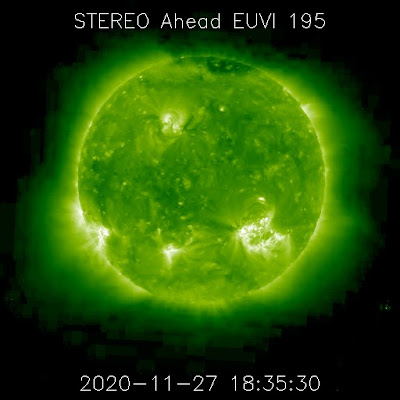 |
| courtesy: nasa.gov |
Just one week ago, the Sun’s solar flux stood at ~79 sfu (Solar Flux Units) but has climbed rapidly to 110. With several active sunspot regions on the earth-facing side of the Sun and several actively flaring groups about to rotate into view on the backside, it seems as if this sudden growth may be sustainable.
What is particularly encouraging is the activity level of the earth-side spots as well as the ones coming around, with several C and B-class flares continuing to push the flux higher.
Although it will likely slow and subside, a key indicator of future strength will be the time that it takes to recover and climb again.
Another interesting gauge of a new cycle’s possible future strength is the number of months needed to reach an average monthly SFI of ‘90’. Strong cycles tend to climb early and rapidly, in order to reach their lofty heights.
The strongest cycle on record was Cycle 19, the grandaddy of them all.
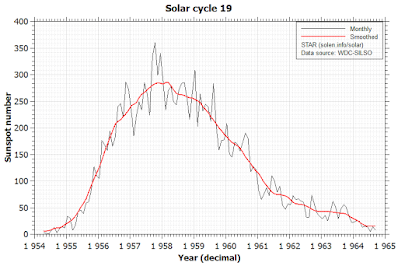 |
| courtesy: http://www.solen.info/solar/ |
Compared to anything before or after, it was a magnificent monster of a cycle for ham radio. Cycle 19 reached the magic SFI 90 value in only 18 months ... Cycle 25 has reached this same point in just 12 months! If this is indeed an accurate marker for cycle strength, and there is no reason to believe otherwise, then maybe we should all hold onto our hats.
We’ve been told for several years by those who know these things, that Cycle 25 would likely be a repeat of the poorly-performing Cycle 24, or even weaker. I think one thing that can now be reasonably surmised is that this isn't another Cycle 24! We should know shortly, if Cycle 25 is the real thing or not, once the termination event has been confirmed.
In the meantime, enjoy the wide open strong signal opportunities now playing on 10m ... the band is back once again and in fine form ... way earlier than anyone ever expected!
(1) Scott W. McIntosh (1), Sandra C. Chapman (2), Robert J. Leamon (3,4), Ricky Egeland (1), and Nicholas W. Watkins (2,5,6)
1 National Center for Atmospheric Research, P.O. Box 3000, Boulder, CO 80307, USA.
2 Centre for Fusion, Space and Astrophysics, University of Warwick, Coventry CV4 7AL, UK
3 University of Maryland, Department of Astronomy, College Park, MD 20742, USA.
4 NASA Goddard Space Flight Center, Code 672, Greenbelt, MD 20771, USA.
5 Centre for the Analysis of Time Series, London School of Economics and Political Science, London WC2A 2AZ, UK
6 School of Engineering and Innovation, STEM Faculty, The Open University, Milton Keynes, UK
 Hunting For NDBs In CLE262
Hunting For NDBs In CLE262
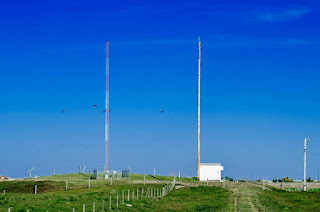 |
| ZYC-254 courtesy: http://www.ve3gop.com/ |
Propagation on MF has been excellent this past week and hopefully will continue to be good.
A challenge target for listeners in North America is ZYC - 254kHz in Calgary, Alberta. It's widely heard throughout North America thanks to its lower than usual modulation frequency. Listen for ZYC's upper sideband on 254.361 kHz with your receiver in the CW mode.
When tuning for NDBs, put your receiver in the CW mode and listen for the NDB's CW identifier, repeated every few seconds. Listen for U.S. NDB identifiers approximately 1 kHz higher or lower than the published transmitted frequency since these beacons are modulated with a 1020 Hz tone approximately.
For example, 'AA' near Fargo, ND, transmits on 365 kHz and its upper sideband CW identifier is tuned at 366.025 kHz while its lower sideband CW ident can be tuned at 363.946 kHz. Its USB tone is actually 1025 Hz while its LSB tone is 1054 Hz.
Often, one sideband will be much stronger than the other so if you don't hear the first one, try listening on the other sideband.
Canadian NDBs normally have an USB tone only, usually very close to 400 Hz. They also have a long dash (keydown) following the CW identifier.
All NDBs heard in North America will be listed in the RNA database (updated daily) while those heard in Europe may be found in the REU database. Beacons heard outside of these regions will be found in the RWW database. These databases have recently been re-vamped and are slicker than ever before!
From CLE coordinator Brian Keyte (G3SIA), comes the following CLE info:
Hello all,
This coming weekend we have another chance to forget the current problems for a while and enjoy a Coordinated Listening Event.
All CLE logs will be very welcome, short or long.
Days: Friday 20 Nov. - Monday 23 Nov.
Times: Start and end at midday, local time at the receiver.
Normal NDBs in the ranges:
240.0 - 259.9 kHz plus 420.0 - 439.9 kHz
(BOTH ranges are for ALL listeners)
Please log the NDBs you can identify that are listed in the ranges, plus any
UNIDs that you come across there.
You can find details of the beacons in those ranges, lists and maps, if you
go to http://www.ndblist.info/cle.htm and click on the 'CLE SEEKLIST'
link.
Send your final CLE log to [email protected] with CLE262 and FINAL in the
email title.
Please show on EVERY LINE of your log:
# The full Date (or Day no.) e.g. '2020-11-20' (or just '20')
and UTC (the day changes at 00:00 UTC)
# kHz (the beacon's nominal published frequency if you know it)
# The Call Ident.
Other optional details - Location, Distance, etc. - go LATER in the same line (or in footnotes). Please make your log useful to old and new members alike by ALWAYS including your own location and brief details of the equipment and aerial(s) that you were using.
We will send an 'Any More Logs?' email at about 20:00 UTC on Tuesday evening so you can check that your log has been found OK.
To be included in the combined results your log must have arrived by 09:00
UTC on Wednesday 25 Nov. at the very latest.
We hope to complete making the Combined Results within a day or two.
Good listening
Brian and Joachim
---------------------------------------------------------------------
From: Brian Keyte G3SIA ndbcle'at'gmail.com
Location: Surrey, SE England (CLE coordinator)
---------------------------------------------------------------------
If you are interested in some remote listening - maybe
due to local difficulties - you could use any one remote
receiver for your loggings, stating its location and with
the owner's permission if required.
( e.g. see kiwisdr.com )
A remote listener may NOT also use another receiver,
local or remote, to make more loggings for the same CLE.
These listening events serve several purposes. They
• determine, worldwide, which beacons are out-of-service or have gone silent since the last CLE covering this range
• will indicate the state of propagation conditions at the various participant locations
• will give you an indication of how well your LF/MF receiving system is working
• give participants a fun yet challenging activity to keep their listening skills honed
Final details can be found at the NDB List website, and worldwide results, for every participant, will be posted there a few days after the event.
The NDB List Group is a great place to learn more about the 'Art of NDB DXing' or to meet other DXers in your region. There is a lot of good information available there and new members are always very welcome. As well, you can follow the results of other CLE participants from night to night as propagation is always an active topic of discussion.
You need not be an NDB List member to participate in the CLEs and all reports, no matter how small, are of much value to the organizers.
Remember - 'First-time' logs are always VERY welcome!
Reports may be sent to the NDB List Group or e-mailed to CLE co-ordinator, Brian Keyte (G3SIA), whose address appears above. If you are a member of the group, all final results will also be e-mailed and posted there.
Please ... give the CLE a try ... then let us know what NDB's can be heard from your location! Your report can then be added to the worldwide database to help keep it up-to-date.
Have fun and good hunting!
 BCB DX + A (Possibly) Quieter Receive Antenna
BCB DX + A (Possibly) Quieter Receive Antenna
The earlier very quiet geomagnetic field has produced some amazing propagation on the AM Broadcast Band for west coast DXers. Where local blowtorches don't splatter the band, the past few nights have produced audible signals from several European countries while the mornings are filled with Asians and signals from Alaska ... yes, on the AM Broadcast Band!
The morning of October 11th was particularly good here, with 9 different stations in Alaska heard. Listen and see if you can hear the identification at the top of the hour (7 AM my time):
780 KNOM Nome https://qsl.net/ve7sl/knom.mp3
670 KDLG Dillingham https://qsl.net/ve7sl/kdlg.mp3
700 KBYR Anchorage https://qsl.net/ve7sl/kbyr.mp3
680 KBRW Barrow https://qsl.net/ve7sl/kbrw.mp3
890 KBBI Homer https://qsl.net/ve7sl/kbbi.mp3
This is a short clip from HLAZ, Far East Broadcasting Company, with their 'Radio Liangyou' program in Japanese. HLAZ is located in Jeju, South Korea. They will also respond to reception reports with a nice card ... sadly a growing rarity with AM broadcasters nowadays.
These were received using my Perseus SDR and 10' x 20' active loop pointed to the NW.
Hopefully these nice conditions will continue for some time but on the other hand, I'd like to see the Sun ramp-up its sunspot production as fast as it can, which would likely put a damper on these quiet conditions. (post edit: and that's exactly what happened!)
An interesting antenna that may help overcome their noise issues is described by KK5JY on his website here.
It looks simple enough to deploy and try to see if it overcomes your local noise issues. Those with underground utilities however, may find that it makes the noise worse.
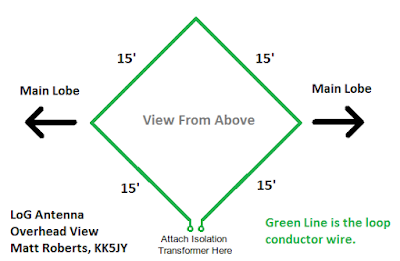 |
| courtesy: kk5jy.net |
 Hunting For NDBs in CLE261
Hunting For NDBs in CLE261
 |
| AP-378 Mayne Island, BC |
It's CLE time again!'CLE's are 'Co-ordinated Listening Events, and NDB DXers around the world focus their listening time on one small slice of the NDB spectrum.
This time the hunting ground is from 190.0 - 1740.0 kHz!
The challenge this time is to log just one (1) beacon from as many 'radio countries' as you can. In North America and other regions, an individual state or province counts as a radio 'country', so there are plenty of opportunities to fill your logbook.
Propagation on MF has been excellent this past week and hopefully will continue to be good.
A challenge target for listeners in North America is AP - 378kHz on Mayne Island, BC which is about 1/2 mile from me just down the beach! But 'AP' is a challenging target since, from what I can tell, has virtually no ground system. Although it has been heard as far south as Texas, it has never been heard further east than Nebraska. Listen for AP's upper sideband on 378.411kHz with your receiver in the CW mode.
When tuning for NDBs, put your receiver in the CW mode and listen for the NDB's CW identifier, repeated every few seconds. Listen for U.S. NDB identifiers approximately 1 kHz higher or lower than the published transmitted frequency since these beacons are modulated with a 1020 Hz tone approximately.
For example, 'AA' near Fargo, ND, transmits on 365 kHz and its upper sideband CW identifier is tuned at 366.025 kHz while its lower sideband CW ident can be tuned at 363.946 kHz. Its USB tone is actually 1025 Hz while its LSB tone is 1054 Hz.
Often, one sideband will be much stronger than the other so if you don't hear the first one, try listening on the other sideband.
Canadian NDBs normally have an USB tone only, usually very close to 400 Hz. They also have a long dash (keydown) following the CW identifier.
All NDBs heard in North America will be listed in the RNA database (updated daily) while those heard in Europe may be found in the REU database. Beacons heard outside of these regions will be found in the RWW database. These databases have recently been re-vamped and are slicker than ever before!
From CLE coordinator Brian Keyte (G3SIA), comes the following CLE info:
Our October Coordinated Listening Event is less than a week away.
Something very straightforward, but it is a first-time idea and it should be
good for everyone - including first time listeners.
It is a ‘One per Radio Country’ CLE!
Days: Friday 23 Oct. - Monday 26 Oct.
Times: Start and end at midday, local time at the receiver
Target: ONE NDB from each radio country
QRG: 190.0 - 1740.0 kHz
Yes, please log JUST ONE NDB from each radio country (not DGPS, NAVTEX,
Amateur or UNID).
All our radio countries are listed in the NDB List Website
(http://www.ndblist.info/ndbinfo/countrylist.pdf) There are 373 of them!
However most of the countries will be out of range for you and several are
without any active NDBs at all:
Region Radio
Countries
-------------- -------
N. America 66
C. America 35
S. America 20
Europe 63
Africa 68
Asia 60
Oceania 49
Antarctica 5
Int. Waters 7
-------
373
(UNIDs 8)
Even listening from the best location possible you will do very well if you
log 50 countries. Reaching 100 will be magnificent!
(If you would like one or more of our attractive listening awards, this
would be an ideal CLE -
Please see http://www.ndblist.info/ndbinfo/NDBAwardsList3.5.pdf)
Please look out for extra information in the Final Details in a few Days,
with advice on log-making, etc.
73
Brian
---------------------------------------------------------------------
From: Brian Keyte G3SIA ndbcle’at’gmail.com
Location: Surrey, SE England (CLE coordinator)
---------------------------------------------------------------------
If you are interested in some remote listening - maybe due to local difficulties - you could use any one remote receiver for your loggings,stating its location and with the owner’s permission if required.
A remote listener may NOT also use another receiver, local or remote, to make further loggings for the same CLE.
These listening events serve several purposes. They
• determine, worldwide, which beacons are out-of-service or have gone silent since the last CLE covering this range
• will indicate the state of propagation conditions at the various participant locations
• will give you an indication of how well your LF/MF receiving system is working
• give participants a fun yet challenging activity to keep their listening skills honed
Final details can be found at the NDB List website, and worldwide results, for every participant, will be posted there a few days after the event.
The NDB List Group is a great place to learn more about the 'Art of NDB DXing' or to meet other DXers in your region. There is a lot of good information available there and new members are always very welcome. As well, you can follow the results of other CLE participants from night to night as propagation is always an active topic of discussion.
You need not be an NDB List member to participate in the CLEs and all reports, no matter how small, are of much value to the organizers.
Remember - 'First-time' logs are always VERY welcome!
Reports may be sent to the NDB List Group or e-mailed to CLE co-ordinator, Brian Keyte (G3SIA), whose address appears above. If you are a member of the group, all final results will also be e-mailed and posted there.
Please ... give the CLE a try ... then let us know what NDB's can be heard from your location! Your report can then be added to the worldwide database to help keep it up-to-date.
Have fun and good hunting!
 The 2020 Fall “Classic Exchange”
The 2020 Fall “Classic Exchange”
 |
| W7OS - Radio Club of Tacoma working the CX |
The "CX" encourages participants to use older vintage gear including any homebrew equipment, both receivers and transmitters. A unique scoring system provides bonus points for various equipment and combinations as well as encouraging 'repeat contacts' when you switch to different equipment. Some of the the CX's previous participants are shown here.
 |
| W8KM and his wonderful vintage station |
No vintage gear? ... no problem! All amateurs are invited to participate and get in on the fun no matter what they are using and submit their scores.
 |
| K3MD's Heathkit AT-1 and Hallicrafters HT-37 |
The CX is a low-key relaxing affair and the 'extra' Tuesday operating period should encourage a lot of midweek activity from the vast numbers of retired operators who cherish and run older gear.
 | ||||||||||||||||||||||||
| Lots of combos ready at W4BOH |
 |
| K6ZI, Las Vegas - WWII ARC-5s ready to go |
This year's event includes a new real-time chat page where participants can announce their operating frequencies or make skeds. For complete details, check out the rules here.
If you've never entered the Classic Exchange, why not give it a try this year as it truly is a case of 'the more the merrier' ... and eastern operators, make sure to keep the porch light on for us out west!
